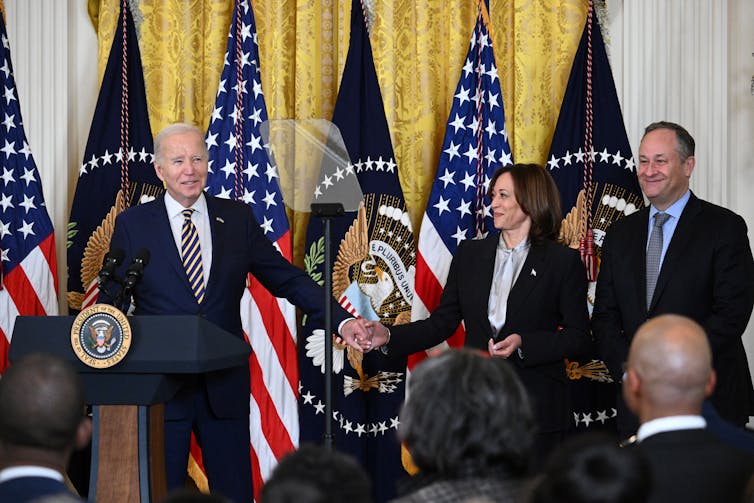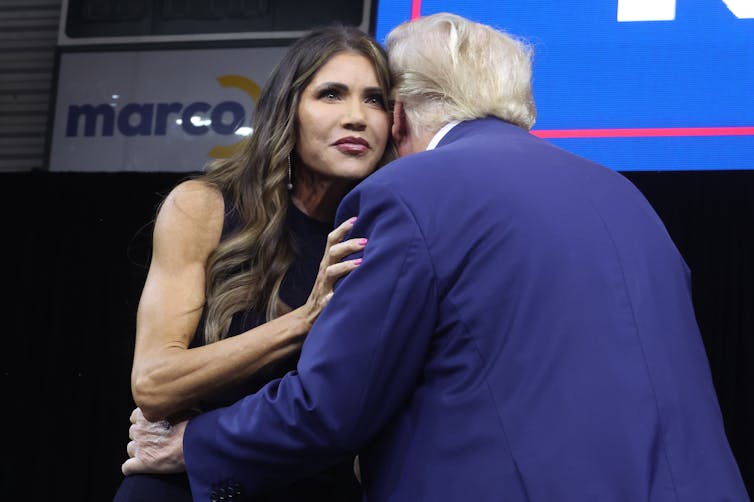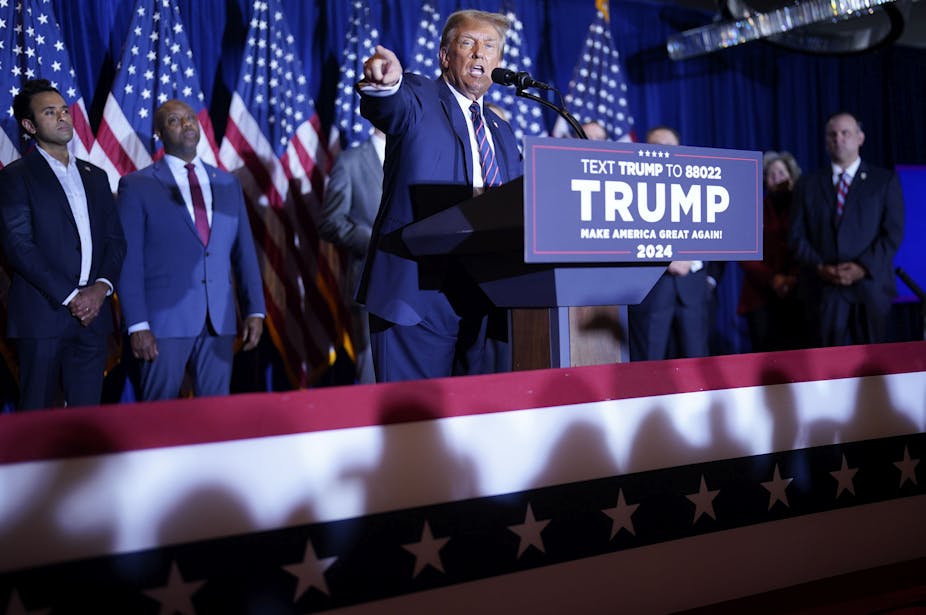The November presidential election might seem far away, but it’s time for the veepstakes – already. You know, that favorite game of pundits, politicos and political junkies who, every four years, obsess over the presidential candidates’ choice for vice president.
Of course, most states have not yet held their presidential primary or caucus. And nominations won’t be made official until the summer Democratic and Republican conventions.
But with President Joe Biden and former President Donald Trump on track to win their party’s nominations, media headlines are already turning to the veepstakes. Who will Trump pick for vice president? Did he really ask Robert F. Kennedy Jr. to be his running mate? Will Biden drop Vice President Kamala Harris from the Democratic ticket?
As a political scientist who has studied veepstakes media coverage, I advise anyone following the vice presidential race to take all of this feverish speculation with a grain of salt.
You’ll hear in the speculation, for example, that vice presidents don’t really matter once in office and that the vice president pick has to be someone who can help win the election by delivering a key state or voting bloc.
But what matters most to voters, according to my research, and to the future of this country is finding someone who is well qualified to serve as vice president – and president, if necessary.

What the media get wrong
Veepstakes media coverage deserves its poor reputation as little more than an electoral parlor game. Too bad: Given the vice presidency’s importance and the media’s opportunity to educate Americans about who could be next to serve in the office, it should be so much more than that. This is the conclusion from my 2023 book, “News Media Coverage of the Vice-Presidential Selection Process: What’s Wrong with the ‘Veepstakes?’”
I used data from presidential elections from 2000 through 2020 to conduct the first systematic analysis of veepstakes media coverage. For each competitive vice presidential selection process during that time – five for Democrats, four for Republicans – I studied 10 “veepstakes guides.”
This means articles or other news features from major media outlets, such as The New York Times, CNN and Fox News, profiling numerous vice presidential contenders. Typically, these profiles break down the perceived advantages and disadvantages associated with choosing a certain candidate.
Journalists and their editors decide which criteria to consider when making those evaluations. This allows me to characterize the media’s messages about what is important when selecting a vice presidential candidate.
So, if 75% of the profiles of potential Democratic running mates in 2020 mentioned age, but only 40% mentioned political experience, I would conclude that media coverage, in general, portrayed age as a more relevant selection criterion than experience.
What does the evidence show?
Veepstakes media coverage tends to focus on whether a potential running mate can help win the election – not on who can help the president govern once in office.
From 2000-2016, for example, 73% of the vice presidential candidate profiles referenced the candidate’s home state, race, age, gender or social class as a reason to select or reject them.
Whether a candidate was qualified to serve in the White House attracted much less attention. Just half as many veepstakes profiles – approximately 38% – discussed the candidates’ political experience, working relationship with the presidential candidate or, more generally, whether they were up to the job of being vice president or president.
In fact, I found that journalists are more likely to discuss a potential running mate’s physical appearance than whether he or she is qualified to serve as vice president.
A potential vice presidential candidate’s political or professional experience gets even less media coverage in the run-up to a close election. Only when the outcome seems like a foregone conclusion do journalists spend about as much time weighing a potential running mate’s governing capacities as their electoral appeal. Choosing a well-qualified vice president is treated as a luxury that only some presidential candidates can afford.
Coverage around the 2024 GOP vice presidential pick is just heating up. But unfortunately, I think the country is likely to see the same type of veepstakes coverage in 2024 as in previous elections: fevered speculation about who can deliver an election victory, with some occasional commentary on who can serve effectively as vice president.

How to get it right
The problem with veepstakes media coverage, generally speaking, is that it overstates the vice presidential candidate’s influence on voters and understates the importance of electing a well qualified vice president.
Vice presidents have little in the way of formal, constitutional powers. They break ties in the Senate. And in what used to be a simple ceremonial function, they also open and count the states’ electoral votes after a presidential election.
They are also first in line to take over as president, if necessary.
But over the past half-century, vice presidents have gained a great deal of informal power, too. In most administrations, they serve as top presidential advisers who play key roles in many major decisions. It is therefore important for presidential candidates to choose a running mate who can help them govern once in office.
Choosing a well-qualified running mate is also a good electoral strategy. My co-author, Kyle C. Kopko, and I demonstrate this in our 2020 book, “Do Running Mates Matter? The Influence of Vice Presidential Candidates in Presidential Elections.” Voters reward presidential candidates for selecting someone with the experience necessary to serve as vice president by more favorably rating their judgment and delivering greater support at the polls.
The opposite is true when selecting a less-experienced or poorly qualified vice president in a desperate bid for votes – think Sarah Palin, in 2008. That strategy backfires.
In short, running mates mostly have an indirect effect on how people vote by influencing what they think of the presidential candidates. Rarely does the choice of a vice president have direct or targeted effects on voting. That is to say, very few people change their vote simply because they like the vice president or come from the same state or demographic group.
The media’s role
A free press is vital to democracy in the U.S. Among other things, it can serve the American people – not to mention presidential campaigns – by helping to provide relevant information about contenders for the vice presidency before they join a party ticket or get elected to office.
Informative news articles can provide answers to the most important questions: What are the potential running mate’s qualifications? What strengths will he or she bring to the White House? If elected, would the new president and vice president work well together?
My research suggests that this is the standard to which journalists and their audiences should aspire as they enter the veepstakes season. This is a consequential choice that requires serious, substantive analysis. You can pay attention to those who treat it as such – and ignore those who don’t.

